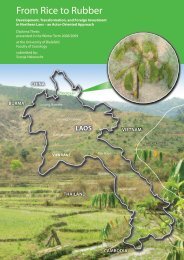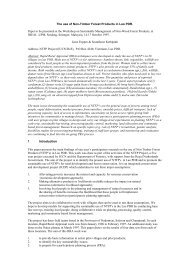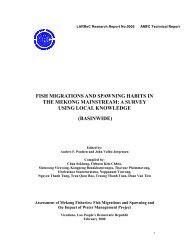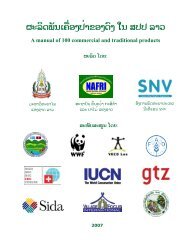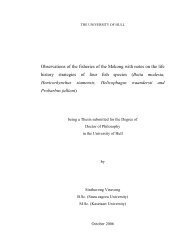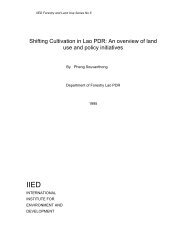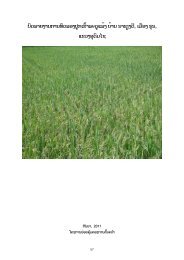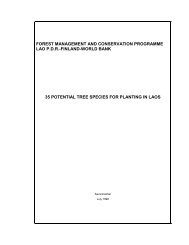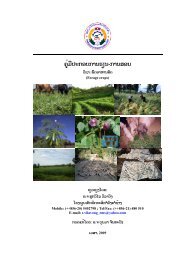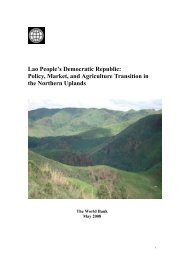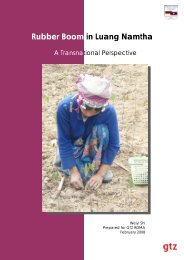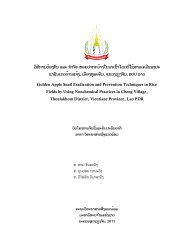improved fallow systems in the luang prabang area, lao pdr - Afaci
improved fallow systems in the luang prabang area, lao pdr - Afaci
improved fallow systems in the luang prabang area, lao pdr - Afaci
Create successful ePaper yourself
Turn your PDF publications into a flip-book with our unique Google optimized e-Paper software.
Improved <strong>fallow</strong> <strong>systems</strong> <strong>in</strong> <strong>the</strong> Luang Prabang <strong>area</strong>, Lao PDR – an analysis based on farmer experiencesResultsChange <strong>in</strong> <strong>fallow</strong> timeChances <strong>in</strong> <strong>the</strong> <strong>fallow</strong> cycle time mightbe an important <strong>in</strong>dicator of a change <strong>in</strong>productivity. Improved plots, with<strong>in</strong>creased productivity might be usedmore frequently than <strong>the</strong>y were before<strong>in</strong>troduction of <strong>the</strong> improv<strong>in</strong>g techniques.Of course, a change <strong>in</strong> cycle time mayhave o<strong>the</strong>r, more socio-economicreasons, as discussed <strong>in</strong> <strong>the</strong><strong>in</strong>troduction.Figure 8. Fallow time of <strong>the</strong> experiment plots before andafter experiment implementation (all=SCRP+FAO/UNDP).The plots studied here have, on average, shorter <strong>fallow</strong> cycles after project implementation thanbefore. This is true for <strong>the</strong> SCRP plots, but <strong>the</strong> pattern is <strong>the</strong> opposite for <strong>the</strong> FAO/UNDP plotsdiscussed on page 17.Yields of <strong>the</strong> study plots compared with <strong>area</strong> averagesThe SCRP has performed crop cuts <strong>in</strong> itsstudy <strong>area</strong> for a number of years. 1998 wasa dim' year and 1999 was a wet year and<strong>the</strong>se two years can probably be seen asrepresentatives for a bad and flood year.Average yields <strong>in</strong> <strong>the</strong> SCRP <strong>area</strong> for thoseyears have been compared with averageyields of <strong>the</strong> <strong>improved</strong> plots <strong>in</strong> <strong>the</strong> same<strong>area</strong> of this study ("normal" years separatedfrom "bad" years). The yield figures arepresented for different lengths of <strong>fallow</strong>.Figure 9: SCRP study <strong>area</strong> average yields and<strong>improved</strong> <strong>fallow</strong> plot yields "good" and "bad"years.Figure 9 <strong>in</strong>dicates that <strong>the</strong> SCRP average yield for a "bad" year is a bit better than <strong>the</strong> mean of<strong>the</strong> <strong>improved</strong> <strong>fallow</strong> plots <strong>in</strong> <strong>the</strong> same <strong>area</strong> for <strong>fallow</strong> periods shorter than 10 years. In "normal"years compared to 1999 <strong>the</strong> two are almost identical.IMPROVED FALLOW SYSTEMS IN THE LUANG PRABANG AREA, LAO PDR - AN ANALYSIS BASED ON FARMEREXPERIENCES.20040940 10



